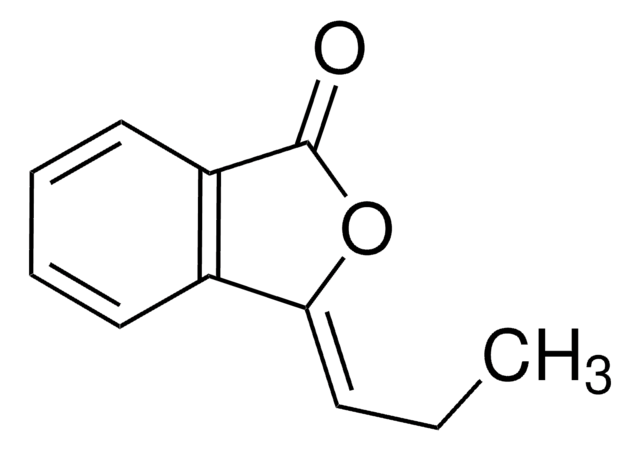Kluczowe dokumenty
44064
3-Methyl-5-(2,2,3-trimethyl-3-cyclopenten-1-yl)-4-penten-2-ol
analytical standard
Synonim(y):
Ebanol
About This Item
Polecane produkty
klasa czystości
analytical standard
Poziom jakości
Próba
≥90% (GC)
okres trwałości
limited shelf life, expiry date on the label
Zastosowanie
cleaning products
cosmetics
food and beverages
personal care
Format
neat
ciąg SMILES
OC(C(C)\C=C/C1C(C(=CC1)C)(C)C)C
InChI
1S/C14H24O/c1-10(12(3)15)6-8-13-9-7-11(2)14(13,4)5/h6-8,10,12-13,15H,9H2,1-5H3/b8-6-
Klucz InChI
RNLHVODSMDJCBR-VURMDHGXSA-N
Szukasz podobnych produktów? Odwiedź Przewodnik dotyczący porównywania produktów
Powiązane kategorie
Opis ogólny
Zastosowanie
Zwroty wskazujące rodzaj zagrożenia
Zwroty wskazujące środki ostrożności
Klasyfikacja zagrożeń
Aquatic Chronic 2
Kod klasy składowania
10 - Combustible liquids
Klasa zagrożenia wodnego (WGK)
WGK 2
Temperatura zapłonu (°F)
226.4 °F
Temperatura zapłonu (°C)
108 °C
Wybierz jedną z najnowszych wersji:
Certyfikaty analizy (CoA)
Nie widzisz odpowiedniej wersji?
Jeśli potrzebujesz konkretnej wersji, możesz wyszukać konkretny certyfikat według numeru partii lub serii.
Masz już ten produkt?
Dokumenty związane z niedawno zakupionymi produktami zostały zamieszczone w Bibliotece dokumentów.
Nasz zespół naukowców ma doświadczenie we wszystkich obszarach badań, w tym w naukach przyrodniczych, materiałoznawstwie, syntezie chemicznej, chromatografii, analityce i wielu innych dziedzinach.
Skontaktuj się z zespołem ds. pomocy technicznej









